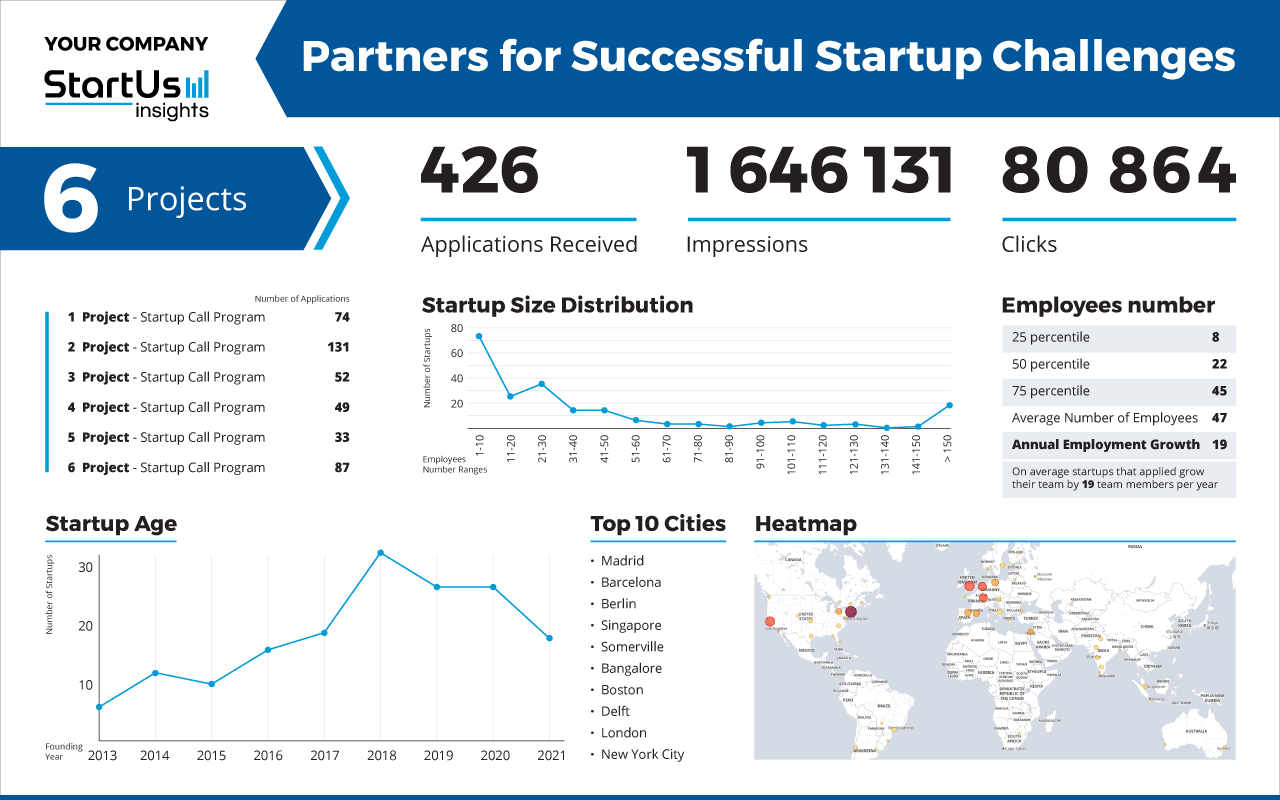Companies today are in a competitive market that is totally different from what existed ever before. As digitalization and globalization have led to a global startup bloom, the competition now comes up from around the world and all the time. Beyond this hypercompetitive landscape, companies are also facing immense challenges, such as tackling climate change, that cannot be solved by just one of them. This is why companies are shifting towards a culture of collaborative innovation or co-innovation.
In collaborative innovation, organizations seek one or more partners to tackle a challenge that is beyond the reach of their internal teams. This brings together complementary skills, technologies, and other resources to advance shared goals. Generally, it occurs in the form of a large company engaging startups, such as through a data-driven startup program. However, corporations are increasingly entering into collaborative innovation initiatives with nonprofits, cities, and academic institutions as well.
Opportunities for Collaborative Innovation
If you’re looking to engage in collaborative innovation but don’t know where to begin, look for opportunities in one of these 4 ways.
Open Data Sharing
Today, companies generate large amounts of data on all aspects of their operations. Sales and marketing data from different channels is improving the customer experience across industries. Production data enables ever better manufacturing advances. For many companies, particularly in the information technology (IT) sector, data is integral to their competitive advantage. However, opening this data to external collaborators has the potential to speed up its translation to innovations.
This is why companies are now increasingly bringing their data out of silos for open innovation initiatives. Companies also have access to publicly available data in the form of patents, academic literature, news, and open-source intelligence (OSINT). Together, these constitute a rich source for both problems to tackle and innovations to solve them.
Continuous Idea Testing
Companies today cannot afford to rest on their victories. They need to constantly innovate to stay ahead. To do this, they come up with, evaluate, and try new ideas throughout the year. Continuous idea testing keeps a company in sync with the changing industry landscape. However, there is only a limited number of ideas that any organization can evaluate in a given period. As an innovation manager, you need to figure out which ideas to prioritize.
Data-driven technology scouting or startup scouting are popular approaches to evaluating external ideas. With these, corporations have access to innovative solutions from around the world that advances their innovation goals. This is how a union between continuous idea testing and open innovation produces exciting opportunities for collaborative innovation.
Identify Bottlenecks
New product ideas aren’t the only root of innovation. Most innovation occurs when companies try to solve inefficiencies in their operations. In recent years, there is a shift away from centralized innovation within companies. In such a bottom-up approach, instead of having a department exclusively responsible for pursuing innovation, every business unit contributes. Employees identify bottlenecks in their day-to-day tasks which have a significant impact on the company’s profitability.
For example, this is how many startup programs are set up. The challenges of the startup programs include bottlenecks that a particular business unit within a company may be facing. If your company has an operational bottleneck, but not the expertise to tackle it, collaborative innovation is for you. Depending on the nature of the bottleneck, a scan of the startup ecosystem or the emerging technology trends could help you discover solutions that address it.
Mission-specific Goals
A company’s mission defines its approach to innovation. But more importantly, it defines which problems to tackle. However, just with any mission worth pursuing, your company wouldn’t probably do it alone. One cleantech company will not solve global warming, but an ecosystem of them may make some headway. Outlining short- and long-term mission-specific goals reveals what you need to accomplish your mission. This is how it serves as a constant source of new collaborations.
Open innovation initiatives allow companies to find the most relevant startups for their needs. This allows innovation managers to screen startups for their suitability for mission-specific goals.
Benefits of Collaborative Innovation
Win-win for All Players
Traditionally, companies have been fiercely competitive, preventing collaboration even when it was the better choice. With the open innovation paradigm, companies are now shifting to a collaborative mindset. Working together with each other and, more increasingly, with startups and scaleups, these collaborations are invariably a win-win for all stakeholders. Corporate-startup partnerships, for example, lower the risk of innovation for companies while providing startups with access to a company’s resources.
Speeds Up Innovation
Collaborative innovation brings the fail-fast approach of startups to corporate innovation. Consequently, companies can try a larger number of ideas at a faster pace. Moreover, it leads to faster scaling of good ideas, for example by providing startups access to their collaborators’ resources. This is how co-innovation speeds up innovation as it reduces the time to market for products and services.
Builds a Robust Ecosystem
As companies enable each other in co-innovation, it improves the entire ecosystem in the long run. It also ensures faster adoption of industry standards, ensuring that different companies don’t spend resources reinventing the wheel. For instance, open application programming interfaces (APIs) enable other companies to develop products and services that are interoperable with your solutions. Or think of how independent app developers add value to the Android or iOS operating systems.
How to Find Partners for Collaborative Innovation
According to our data, over 2,5 million startups and scaleups are active globally. This makes a manual scan of startup activity both time-consuming and expensive. Even then, you may miss out on stealth-mode startups or startups operating under the radar. Using data-driven open innovation scouting provides an exhaustive overview of innovation, saving time and costs while accelerating the search for partners for your collaborative innovation programs.
Depending on your innovation goals, we offer a range of services enabled by the Big Data and AI-powered StartUs Insights Discovery Platform. Some of our services that help companies like Samsung, Iberdrola, and Nestlé engage in collaborative innovation include:
- Startup Programs: Boost startup deal flow through data-driven promotion, direct outreach & storytelling that reaches hundreds of thousands of startups & scaleups, making sure you attract the most relevant ones
- Trend Scouting: Identify emerging and latent trends and developments that will impact your competitiveness
- Startup Scouting: Discover over scan over 2,5 M startups & scaleups globally, scouting the right partners & saving you weeks of desk research

With startup programs, companies collaborate with innovative startups to tackle specific challenges related to their businesses.









